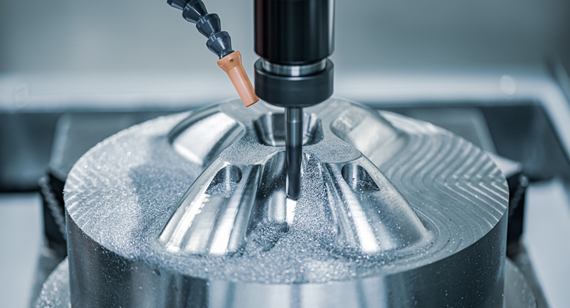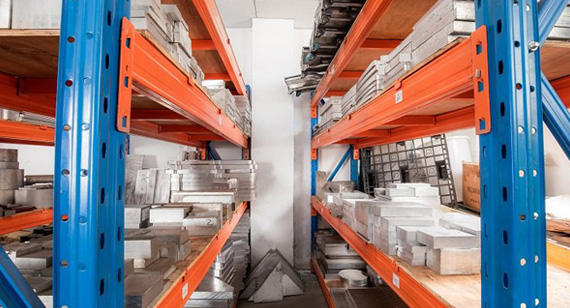15 years one-stop China custom CNC machining parts factory
 297 |
Published by VMT at Sep 26 2024
297 |
Published by VMT at Sep 26 2024
In product development, creating prototypes is a critical step to ensure that the design is functional and manufacturable before mass production. Metal prototypes, in particular, are increasingly popular in industries requiring high precision and durability, such as aerospace, automotive, medical devices, and consumer electronics. Metal prototyping allows manufacturers to test the mechanical properties of parts, check design accuracy, and predict how the final product will perform under real-world conditions. With advancements in CNC machining and 3D printing technologies, metal prototypes can be made quickly and cost-effectively. This quick guide will explore the essentials of metal prototyping, the benefits, methods for producing metal prototypes, and tips on selecting the best method for your project.
A metal prototype is an early sample or model of a product created from metal materials to test various aspects of a design before large-scale manufacturing. Prototypes help engineers and designers evaluate form, fit, and function, ensuring that the final product meets the desired specifications. Metal prototypes can be produced using several techniques, including CNC machining, 3D printing, metal casting, and sheet metal fabrication. These prototypes allow for real-world testing, often in harsh environments, where materials like plastic wouldn’t provide reliable data.
Metal prototypes are used in industries where precision, durability, and mechanical strength are vital. For instance, a metal prototype of a component used in a car engine needs to be tested under high-temperature and pressure conditions, making metal the ideal material for prototyping.

Metal should be used for prototyping when the final product or part will be exposed to conditions requiring high strength, durability, or specific thermal and electrical properties. Common scenarios for using metal prototypes include:
In these cases, metal prototypes offer insights into how the final product will perform, which is crucial for making any necessary adjustments before moving to full production.
Several metals are commonly used in rapid prototyping due to their strength, machinability, and cost-effectiveness. Some of the most popular metals include:

Aluminum: Lightweight, corrosion-resistant, and easy to machine, aluminum is widely used for metal prototype machining parts in industries like aerospace and automotive. Its machinability allows for high precision in CNC prototype machining.
Stainless Steel: Known for its strength and corrosion resistance, stainless steel is used for parts that require durability and exposure to harsh environments. It is commonly used in medical and food processing equipment.
Brass: This metal is preferred for applications requiring excellent machinability and low friction. Brass is often used for prototypes of valves, fittings, and electrical components.
Titanium: Lightweight and incredibly strong, titanium is used in high-performance industries such as aerospace and medical devices. Though more expensive, titanium prototypes offer the best strength-to-weight ratio.
Copper: Excellent electrical and thermal conductivity makes copper ideal for electronic components or heat sinks in rapid prototyping.
Each metal has specific properties that make it ideal for certain applications. When choosing the right metal for your prototype, consider factors such as strength, weight, machinability, and resistance to heat and corrosion.
1. High Strength
Metal prototypes provide significantly greater strength compared to plastic prototypes, making them better suited for functional testing in demanding environments. Metals like stainless steel or aluminum offer high resistance to stress and strain, enabling prototypes to endure rigorous mechanical tests without breaking or deforming.
2. Incredibly Cost-Effective
While metal prototypes may have a higher initial cost than plastic prototypes, they are more durable and can undergo repeated testing without losing structural integrity. This durability can save costs in the long run by reducing the need for multiple prototypes during the testing phase. Additionally, advancements in CNC machining and 3D printing technologies have made metal prototyping more accessible and affordable.
3. Metal Surface
Metal prototypes offer a superior finish compared to plastic prototypes. The surface of a metal prototype is smoother, more durable, and can undergo various surface treatments such as anodizing, polishing, or powder coating, which are essential for final production. Surface treatments allow manufacturers to test coatings or finishes before applying them to mass-produced parts.
4. Versatile
Metal prototypes are more versatile than plastic ones, capable of being used in a wide range of environments, including high heat, high pressure, or corrosive conditions. This versatility makes metal prototyping ideal for industries like aerospace, automotive, and electronics, where components need to withstand various stressors.
Benefits of Metal Prototypes
Metal prototypes offer numerous advantages that can streamline the product development process. These benefits include:
Durability: Metal prototypes are robust and able to withstand more rigorous testing than plastic prototypes, providing more accurate feedback on how the final product will perform.
Material Property Testing: Metal prototypes allow manufacturers to test material properties such as hardness, strength, and thermal conductivity, which are critical in many applications.
Precision: Metal prototypes are more dimensionally stable, allowing for better tolerance control and more accurate representation of the final product.
Functionality Testing: Metal prototypes allow for real-world functional testing, ensuring the part can endure operational stresses before mass production.
Aesthetic Value: The surface finish of metal prototypes is closer to what the final product will look like, allowing designers to evaluate both form and function.
There are various methods for creating metal prototypes, each offering different benefits depending on the application, design complexity, and budget. Below are the five most common ways to make metal prototypes.
Metal CNC Machining Prototypes
CNC machining is one of the most popular methods for creating metal prototypes. Using CNC precision machining, complex metal parts can be created with high accuracy and tight tolerances.
Pros:
Cons:
Metal 3D Printing Prototypes
Metal 3D printing, or additive manufacturing, is gaining popularity in metal prototyping due to its design flexibility. This process builds parts layer by layer, allowing for complex geometries.
Pros:
Cons:
Sheet Metal Prototypes
Sheet metal fabrication is an effective method for creating parts with simple shapes. Sheet metal prototyping is commonly used in the automotive, aerospace, and electronics industries.
Pros:
Cons:
Metal Casting Prototypes
Metal casting involves pouring molten metal into a mold to form the desired shape. This method is often used for prototypes of larger parts or components that will be mass-produced using casting techniques.
Pros:
Cons:
Metal Aluminum Extrusion Prototypes
Aluminum extrusion involves forcing molten aluminum through a die to create long parts with uniform cross-sections. This method is commonly used for prototypes of parts like frames or support beams.
Pros:
Cons:

Selecting the right method for making metal prototypes depends on several factors, including part complexity, material properties, and budget. Below are key considerations when choosing a metal prototyping process.
1. Quality
If high precision and surface finish are critical, CNC machining or metal casting may be the best options, as they offer tight tolerances and high-quality finishes.
2. Purpose
Consider the end goal of the prototype. If it is for testing mechanical strength, metal 3D printing or CNC machining would be appropriate. For parts that require testing in large quantities or longer parts, sheet metal or extrusion may be more suitable.
3. Part Complexity
For parts with complex geometries, metal 3D printing allows for intricate designs that may be difficult to achieve with traditional methods. However, CNC machining is best for parts requiring tight tolerances.
4. Quantity
If you need only a few prototypes, CNC machining or 3D printing is ideal due to the lack of minimum order quantities. For larger production runs, casting or sheet metal prototyping might be more cost-effective.
5. Cost/Budget
Consider the cost of tooling, material, and labor. CNC machining can be expensive for small batches, while sheet metal fabrication or extrusion is more cost-effective for simple designs.
6. Material Properties
Different metals have different properties such as strength, conductivity, and machinability. Aluminum is lightweight and corrosion-resistant, making it ideal for aerospace applications, while steel is stronger but heavier.
7. Machinability
The ease of machining a material affects the time and cost of production. Aluminum and brass are easy to machine, while harder metals like titanium or stainless steel may increase machining time and cost.
8. Tools
The tools required for different prototyping methods vary. CNC machines and 3D printers have high setup costs, while casting requires specialized molds. Choose the process that aligns with your available tools and expertise.
If surface quality is a priority, CNC machining or metal casting with additional finishing processes like polishing or anodizing may provide the best results.
Metal prototypes are an essential part of the product development process, offering superior strength, durability, and precision compared to plastic prototypes. Choosing the right metal prototyping method depends on factors such as part complexity, material properties, production quantity, and budget. Whether you need highly detailed, durable prototypes through CNC machining, or cost-effective, large-scale models via sheet metal fabrication, understanding the available options will help you make informed decisions.
At VMT, we specialize in CNC prototype machining and offer a wide range of metal prototype machining parts to meet your needs. Our team of experts can help you choose the right metal, method, and finishing options to ensure your prototype meets the highest standards.
What is the difference between prototyping and rapid prototyping?
Prototyping refers to creating a sample of a product, while rapid prototyping uses advanced technology to produce prototypes quickly.
What is the cheapest way to make metal parts?
Sheet metal fabrication is often the most cost-effective method for simple geometries and large production runs.
What is the cheapest metal to make?
Aluminum is one of the cheapest metals due to its abundance and ease of processing.
Is metal forming expensive?
Metal forming can be expensive depending on the complexity of the part and the materials used, but for large-scale production, it is cost-effective.
How are custom metal parts made?
Custom metal parts are typically made using CNC machining, 3D printing, or metal casting, depending on the part's complexity and production requirements.
How to make a metal product prototype?
Metal prototypes can be made using various techniques like CNC machining, metal 3D printing, sheet metal fabrication, or metal casting.
What is metal rapid prototyping?
Metal rapid prototyping refers to quickly producing metal prototypes using methods like CNC machining or 3D printing without the need for expensive tooling.
